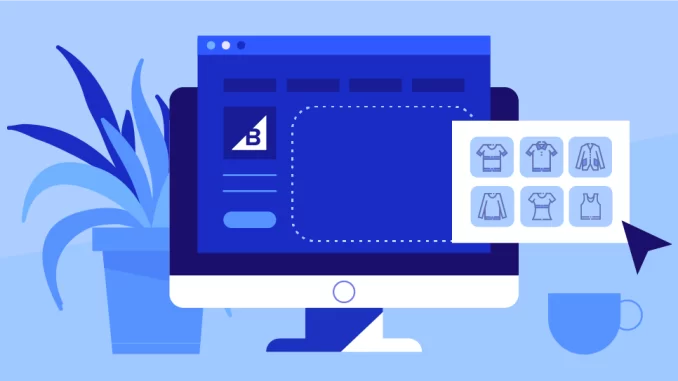
With its promise of greater flexibility and superior user experiences, it’s no wonder businesses are eager to hop on board with headless ecommerce. But like any voyage into new territory, migration demands a well-thought-out roadmap. Let’s dive in and set you up for smooth sailing.
Pre-Migration Assessment
Migrating isn’t just a technical switch; it’s a strategic move. So, before greenlighting the migration process, businesses need to introspect. What are the current pain points? Is the platform not mobile-optimized, or is it the sluggish performance during peak sales? By diagnosing these challenges, the migration objectives become crystal clear. Remember, this migration will be a team effort. So, it’s crucial to onboard specialists, from IT experts to strategy consultants, to ensure the process is streamlined and efficient.
Choosing the Right Headless Solution
With a plethora of options in the market, choosing the right platform is akin to finding a needle in a haystack. However, a well-defined criterion list can ease this. Factors such as scalability, compatibility with current tools, vendor reputation, and, of course, the budget, all play pivotal roles. Also, consider post-launch support and community engagement around the platform. A strong community can be a goldmine for troubleshooting and best practices.
Data Backup and Protection
Migrating without safeguarding your data is like walking a tightrope without a safety net. Every piece of data—be it customer records, product catalogs, or transaction logs, should be meticulously backed up. Advanced cloud solutions or specialized data backup services can be invaluable allies in this step. Also, once backed up, simulate a mock recovery to ensure data integrity and completeness.
Planning the Migration
Now that the groundwork is laid, it’s time to strategize the migration. A phased approach often works best, prioritizing essential components. For instance, you might start with product databases before moving onto customer profiles. Detailed documentation during this phase can serve as a beacon, ensuring everyone remains aligned, and milestones are systematically achieved.
Executing the Migration
The execution phase is where planning meets action. Initiating the headless system setup is paramount, ensuring it aligns with the business’s broader objectives. Following this, the data transfer begins. Given the decoupled nature of headless architectures, this often involves intricate data mappings and transformations, ensuring smooth data flow between the frontend and backend. Integration of auxiliary systems like CRM or ERP becomes paramount to ensure end-to-end process streamlining.
Testing the New System
Once the migration is technically complete, the new system needs thorough vetting. This involves rigorous testing scenarios, spanning different devices, user journeys, and potential stress scenarios (like flash sales). Gathering diverse team feedback, including those from non-technical stakeholders, can provide holistic insights. Any discrepancies, bugs, or performance issues identified should be promptly addressed before a full-scale launch.
Launching and Post-Migration Monitoring
The grand unveiling is more than just a launch—it’s the beginning of a new chapter. However, the narrative doesn’t conclude here. Constant post-launch monitoring is imperative. Utilizing advanced analytics tools, businesses should keep tabs on system performance, user behavior, and potential areas of friction, ensuring swift troubleshooting and improvements.
Employee Training and Onboarding
The most sophisticated system can underperform if the team isn’t familiar with its intricacies. Hence, post-migration, businesses should prioritize comprehensive training sessions. These should cover not only the basic functionalities but also best practices and troubleshooting. With a proficient team at the helm, businesses can unlock the full potential of their new headless architecture.
How Long Does a Typical Migration to a Headless Ecommerce Platform Take?
The duration of a migration to a headless commerce platform can vary considerably based on several factors. Firstly, the complexity and size of your existing ecommerce setup play a significant role. A small store with a limited number of products and straightforward functionalities might only take a few weeks to migrate. In contrast, a larger, more complex store might take several months.
Another crucial factor is the degree of customization and integration required. If you’re looking to integrate several third-party applications, or if you need bespoke features developed, this can extend the timeline. Moreover, data migration, especially if you have a substantial amount of customer and product data, can be time-consuming.
In general, it’s always a good idea to work closely with experienced professionals who can give you a realistic timeline and help ensure a smooth transition. Be wary of anyone who promises an extremely quick turnaround, as it’s essential to prioritize the quality and accuracy of the migration over speed.
Conclusion
The migration to a headless ecommerce system might initially appear challenging, but the long-term dividends, in terms of flexibility, performance, and user experience, are monumental. As businesses gear up to cater to the next generation of digital consumers, headless ecommerce emerges as the lynchpin for success. Steer your ship with confidence and leverage the full might of headless commerce for an unparalleled digital voyage.

Leave a Reply